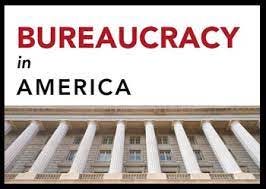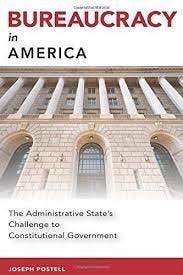In Bureaucracy in America: The Administrative State’s Challenge to Constitutional Government, published by University of Missouri Press in 2017, Joseph Postell sheds much light on the process in which liberal advocacy groups since the 1960s and 1970s, sincerely but erroneously presenting themselves as public interest groups, have further undermined the constitutional principles of representative democracy. The phenomenon is the culmination of ideological and political tendencies since the beginning of the twentieth century. Said dynamics have contributed to a legitimation crisis in the American republic, inasmuch as many if not most citizens are aware that the U.S. state today is not a government of, by, and for the people, which the Founders intended to establish.
Postell, professor of political science at Hillsdale College, nicely presents the American constitutional principles of state administration: lawmaking by elected representatives, unity and responsibility in the…



